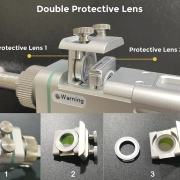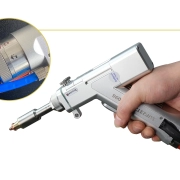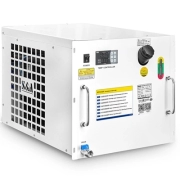What materials can be welded by laser welding machines
Due to the advantages of laser welding machine: fast welding speed, high precision, high efficiency, smooth and beautiful weld, etc., it has become a new industrial technology in industrial laser welding processing. At present, laser welding machines are widely used, but many people do not know which materials and products can be welded by laser welding machines. The professional and technical personnel of Triumph laser welding machine manufacturers will introduce you in detail:

1. Mould steel
The laser welding machine can be applied to S136, SKD-11, NAK80, 8407, 718, 738, H13, P20, W302, 2344 and other types of die steel welding, and the welding effect is good.
2. Carbon steel
Carbon steel is welded with a laser welding machine, and the effect is good, and its welding quality depends on the impurity content. In order to achieve good weld quality, preheating is required when the carbon content exceeds 0.25%. When steels with different carbon content are welded to each other, the torch can be slightly biased to the side of the low-carbon material to ensure joint quality. Since the heating rate and cooling rate of laser welding machine welding are very fast, when welding carbon steel. As the carbon content increases, so does the susceptibility to weld cracks and notches. Medium and high carbon steels and ordinary alloy steels can be laser welded well, but preheating and post-weld treatment are required to relieve stress and avoid cracks.
3. Alloy steel
For laser welding of low-alloy high-strength steels, as long as the selected welding parameters are appropriate, joints comparable to the mechanical properties of the base metal can be obtained.
4. Stainless steel
In general, stainless steel welding is easier to obtain high-quality joints than conventional welding. Due to the high welding speed of laser welding and the small heat affected zone, the overheating phenomenon and the adverse effects of large linear expansion coefficient during stainless steel welding are alleviated, and the weld has no porosity, inclusions and other defects. Compared to carbon steel, stainless steel has a lower thermal conductivity, high energy absorption rate, and melting efficiency to obtain deep penetration narrow welds. Welding thin plates with low-power laser welding can obtain joints with good appearance and smooth and beautiful welds.
5. Copper and copper alloys
Welding copper and copper alloys are prone to the problems of non-fusion and non-penetration, so energy concentration, high-power heat source should be used and preheating measures should be used; When the thickness of the workpiece is thin or the structural stiffness is small, and there is no measure to prevent deformation, it is easy to produce large deformation after welding, and when the welded joint is subject to greater rigidity constraints, it is easy to produce welding stress; It is also prone to hot cracks when welding copper and copper alloys; Porosity is a common defect in the welding of copper and copper alloys.
6. Aluminum and aluminum alloy
Aluminum and aluminum alloy are highly reflective materials, aluminum and its alloy welding, with the increase of temperature, the solubility of hydrogen in aluminum increases sharply, the dissolved hydrogen becomes the defect source of the weld, there are many pores in the weld, and the root may appear void during deep penetration welding, and the weld bead forming is poor.
7. Plastic
Almost all thermoplastics and thermoplastic elastomers can be welded using laser welding technology. Commonly used welding materials are PP, PS, PC, ABS, polyamide, PMMA, polyoxy methylene, PET and PBT. Some other engineering plastics, such as polyphenylene sulfide PPS and liquid crystal polymers, cannot directly use laser welding technology due to their low laser transmittance, and carbon black is generally added to the underlying material so that the material can absorb enough energy to meet the requirements of laser transmission welding.
The research shows that laser welding can not only be welded between a variety of heterogeneous metal materials, but also can be applied to titanium, nickel, zinc, copper, aluminum, chromium, niobium, gold, silver and other metals and their alloys, steel, Kovar alloy and other alloy materials.
This is Yolanda from triumphlaser If you want to learn more about laser marking machine, please don’t hesitate to contact with me.
Email:sales1@triumphlaser.com

 Triumphlaser
Triumphlaser

 Triumphlaser
Triumphlaser

 triumphlaser
triumphlaser triumphlaser
triumphlaser